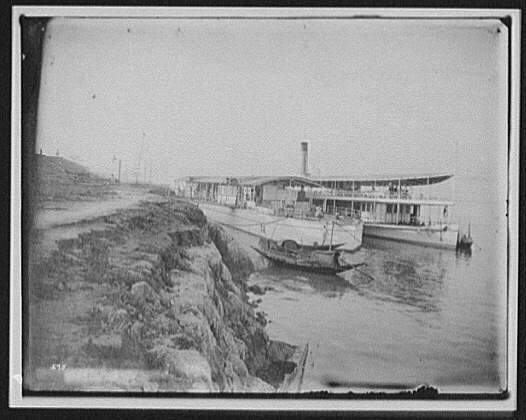My flight arrived at Sapporo airport early in the morning around seven. The day was partly cloudy and it was raining. I was quite relaxed, as the organizers had arranged for pick up from the airport. I approached the counter and informed them about my arrival. Since the first bus was supposed to start at 9 am, I had to wait for almost two hours.
Finally, with all the participants who had arrived by that time, the bus started for the
Sapporo Grand Hotel. As usual, I looked out of the window most of the time. Compared to Tokyo, Sapporo was smaller and most of the roads were four-line, i.e., two lines on each side of the divider. Again, the roads and streets were so clean as if somebody had recently washed the whole town. The same was true about the houses!
Another remarkable thing about the city was space utilisation. I had heard about Japanese obsession with everything 'small' and 'optimum utilisation of resources', but what I saw was quite awesome. Every vacant plot (no matter whatever its size), lying in between the houses was used for onion or potato cultivation. Not a single plot of land was lying barren or unutilised. The roads, too, were decorated with beds of beautiful flowering plants on both sides. And of course, all the houses had little gardens in the front. As I had mentioned earlier, it was spring season, so, the whole city was in full bloom and looked more like a garden city to me- my dream city!
I completely enjoyed the journey from the airport to the hotel. Since day one was actually a zero day, meant for CCi Legal deliberations between the organisers and their partners, I stayed back at the hotel. I was quite tired because of the long journey and the rest gave me the much needed respite. Next day, the real iSummit began. In retrospect, I can say that it was quite different from the other workshops that I had attended. Even the participants were quite different with people from the media and the art world. They were unique personalities- people with unique tattoos, body art, hairstyles, looks and dresses. Overall, the whole atmosphere appeared quite funky to me!!
Everyday, the workshops or 'Labs' as they were known at
iSummit08, were interspersed with social events, like the Japanese tea ceremony; origami or Japanese paper folding art demonstrations and lessons; Japanese calligraphy demonstrations and lessons; ski jumping demonstrations and dinner at
Okurayama Ski- Jump site; reception hosted by the mayor of Sapporo city at the
Park Hotel, Sapporo; a concert at Xanadu, Sapporo by Digital Garage, and an excursion to
Moerenuma Park. Except the concert, I took part in everything and attended all the social events.
The Okurayama Ski- Jump site was very beautiful. We were welcomed on the beats of drums. The drums sounded somewhat familiar to me, more like the Indian drum beats. I didn't know anybody in the conference! I was looking for some Indian faces and found one, Prashant Iyenger. Another person I approached was from Jordan, but he looked very Indian. He was a nice guy and I used to talk to him every now and then throughout the iSummit. I also met a person from Sri Lanka, Thiru Balasubramaniam, who was working in Switzerland. And of course, I met Cynthia Jimes, the researcher from the Institute for the Study of Knowledge Management in Education (ISKME), who were leading the iCommons iCurriculum project.
Other nice people I met at the iSummit were Shinya Ichinohe, a gentleman from Japan, who shared a lot of interesting things about the commons, Japan and Japanese people. Kim Tucker was a co-participant at the education lab, who shared similar concerns about the commons and the developing countries. Jaroslaw Lipszyc and Grazyna Czetwertynska, both from Poland, were also co-participants at the education lab. I also befriended a lady from Japan or rather she befriended me, who had spent some time at Kolkata in India. She recognised my Indianness from my Bindi. She gave me company in between the breaks.
I also learnt the Japanese calligraphy and chose to write 'Woman' in Japanese. After two or three trials, my teacher was satisfied with my work and stamped my paper for accreditation. Its very precious for me and I have saved it. I also participated in the 'tea ceremony' and made some mistakes even after good instructions from the nice lady in 'Kimono'. I was supposed to turn the cup only three times before sipping the tea, but I turned it too many times. Anyway, it was all new and exciting and I was a very happy person in the end.
The actual iSummit started on the second day with a plenary that had some very interesting presentations by Heather Ford, Jimmy Wells, Joi Ito, Mohamed Nanabhay, James Cairns, Johanna Blakley, Erin Mckean. Linking the virtual 'commons' movement with the physical 'commons' of the yore, such as the pastures, forests over which the rural community exercised free access rights, Heather's presentation provided an overview of the movement and its penetration into unique knowledge areas, like fashion, media, art, business and so on. After the plenary session, I was a much enlightened person. I had no idea that the virtual 'Commons' trace their roots back to the 'Commons' or the 'Common Property Resources' as we know them in India.





